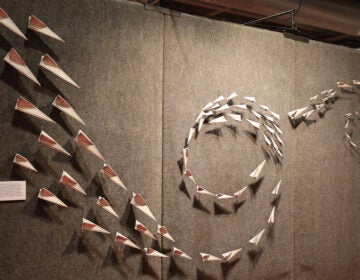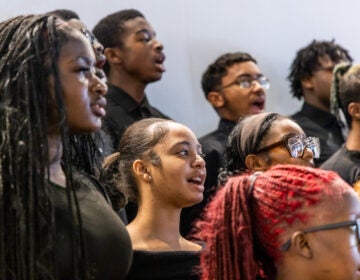Short story collection offers 19 glimpses of life in South Philly
-

-

-
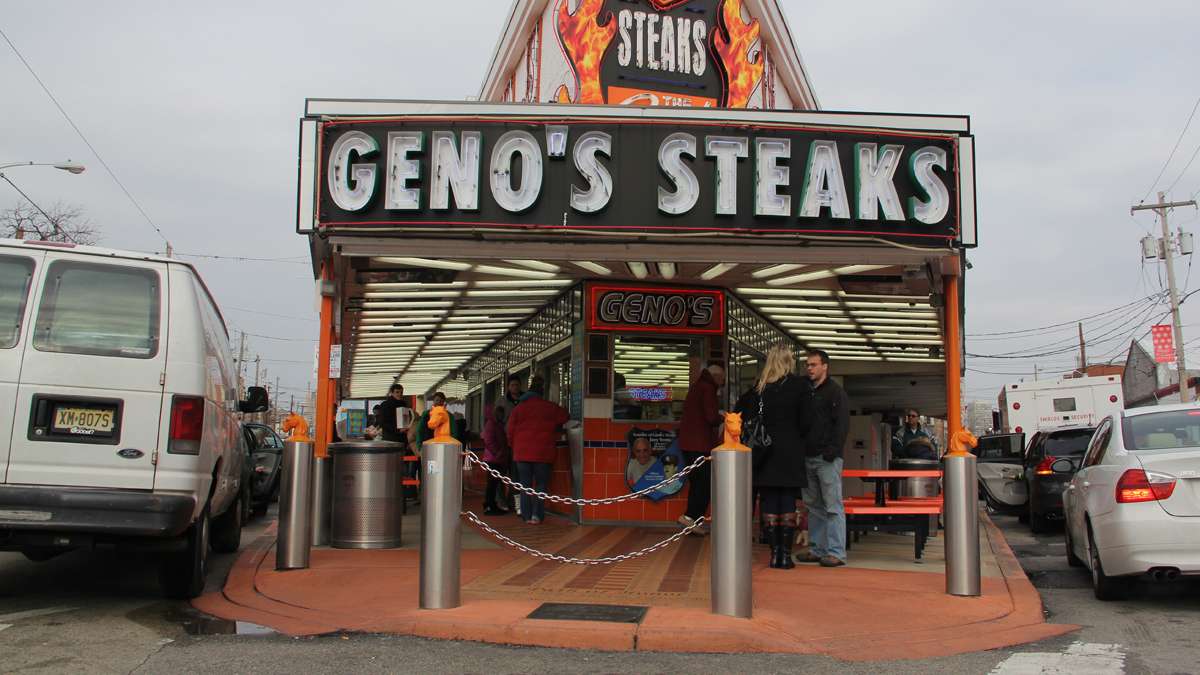
-
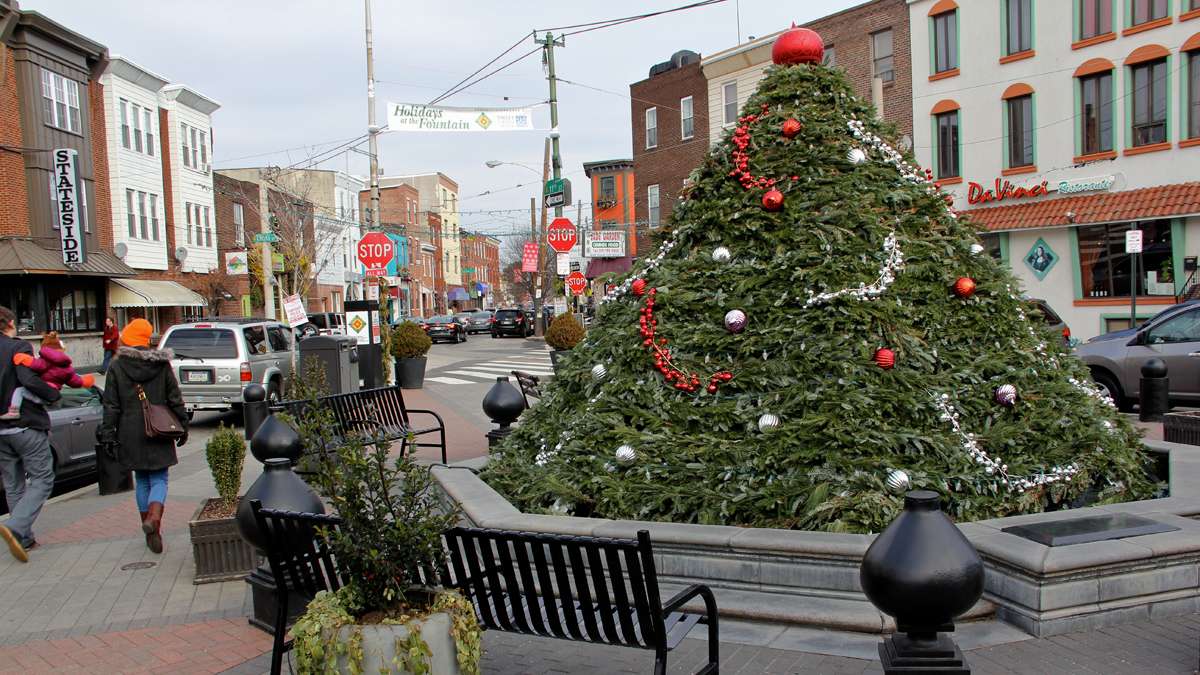
East Passyunk Avenue's 'Singing Fountain' is dressed up for Christmas — as a Christmas tree. (Emma Lee/for NewsWorks)
-
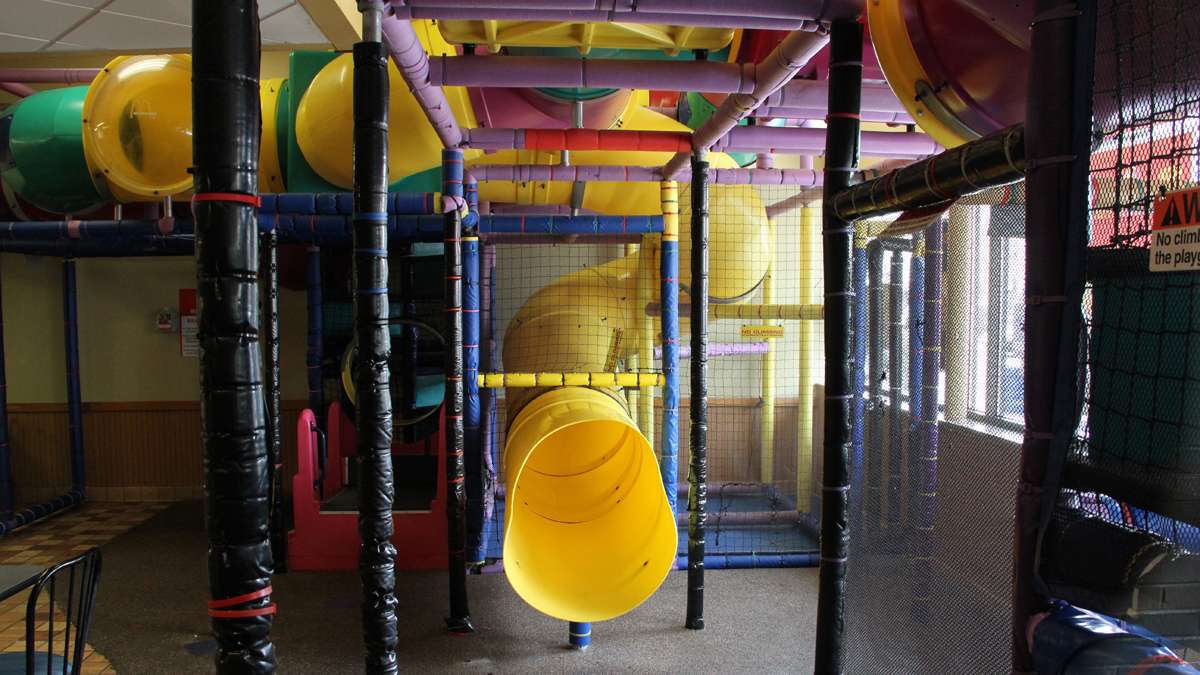
-
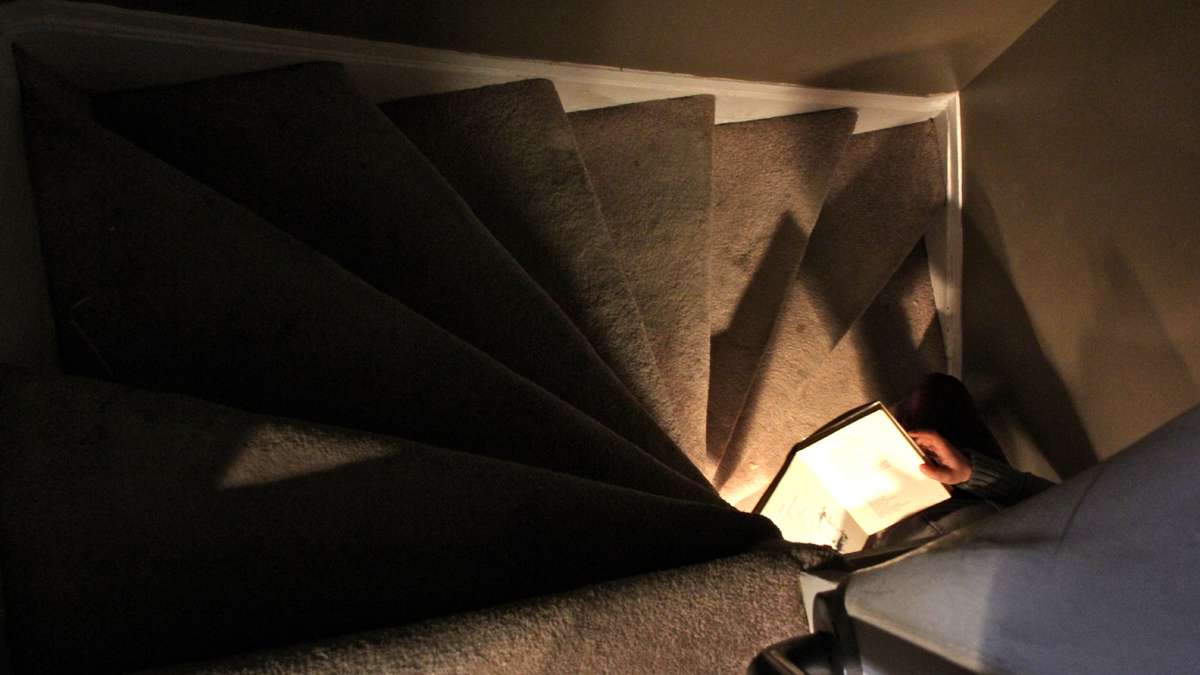
One of the pieces in a new collection of short stories, “South Philly Fiction” (Don Ron Books, 2013), is “Drink Me, Eat Me,” about a young woman living alone in a trinity — a tiny, three-story house where every story is one room.
You find a lot of trinities in the Queen Village and Society Hill neighborhoods of Philadelphia.
Large objects don’t easily fit inside the diminutive structure. Neither do large personalities. In order to get unwieldy things in her life — like a new armoire or a boyfriend — the woman sprinkles drops of a lemon-based potion and chants: “Too cumbersome, too clumsy, too heavy, too tall. Be elegant, be graceful, be lighter, be small.”
The woman is a witch, created by author Elizaeth Corcoran.
“What I learned from a living in a trinity — and I lived in one for right or nine years — there’s no place to hide. It forces an intimacy,” said Corcoran. “There was exactly one door, and that was the bathroom. Nothing else. Everything was open. There was no place you can go to close the door.”
No magic potion helped Corcoran when she lived in that trinity with her then-husband. They used to watch home-improvment television shows, which advised owners of small houses to install lots or mirrors to make rooms appear bigger.
“Yeah, it will make my space look bigger, but it’s not going to be bigger,” said Corcoran. “It doesn’t help me fit the washing machine in the basement.”
Corcoran’s story of a lonely witch trying to make it in the city is one of 19 visions of South Philadelphia in “South Philly Fiction,” which also includes an unemployed man who finds hope in a stray dog (Tom Larsen’s “Tracer”) and a toy salesman down on his luck who has a breakdown in a McDonald’s play area (Chris McCreary’s “Playland”).
Many of the stories are about immigrants: an Indonesian teenager who catches glimpses of headlines from her politically torn homeland while dreaming of the boy she left behind (Sarah Kowalsi’s “Draining the Oceans”); a group of Palestinian women forming their own community with their own social laws (Susan Muaddi-Darraj’s “Reading Coffee Cups”).
“We know South Philly was not just the neighborhood of Rocky,” said Josh McIlvain, who edited and published “South Philly Fiction” with Christopher Munden. “There were tons of immigrant communities that have passed through, and stayed on. Today, South Philly looks a lot of different from 10 or 15 years ago. It was really cool to get a view into these communities that are perfectly well-known within themselves, but outside those communities are not.”
McIlvain and Munden previously published “Philly Fiction” (2006) and “Philly Fiction 2” (2009). McIlvain, who lives in Mount Airy, says a lot of story submissions came from writers who either grew up in Philadelphia or lived in the city at some point in their life. The buyers are often looking to purchase a Philadelphia-related gift.
“Whatever the number of people in the greater Philadelphia area — it’s like 8 million or something like that — that’s a big enough audience to sell a book to,” said McIlvain. “People tend to look at this as such a small area and such a small people, and who wants to hear about Philadelphia? But there is an incredible number of people who live in this area. There is a huge market for things of this nature.”
McIlvain, who said Philadelphia makes a good setting for fiction because the neighborhoods are so different and their residents are undersung, is about to post a call for submissions about West Philadelphia.
WHYY is your source for fact-based, in-depth journalism and information. As a nonprofit organization, we rely on financial support from readers like you. Please give today.



